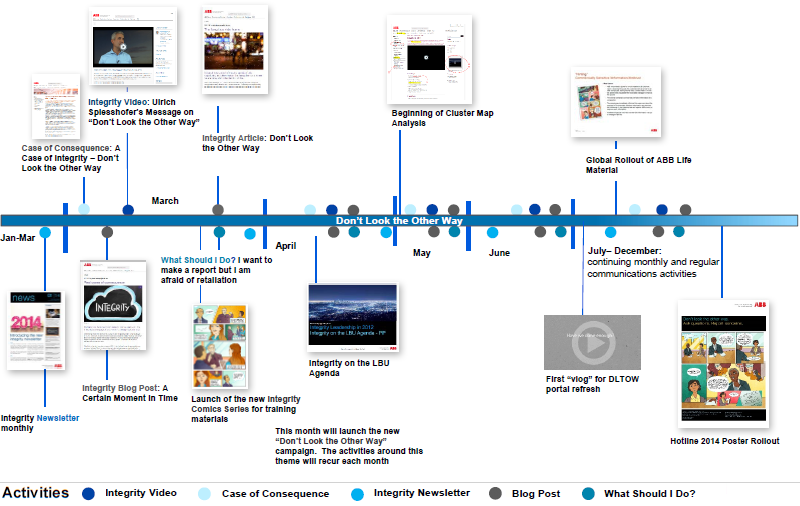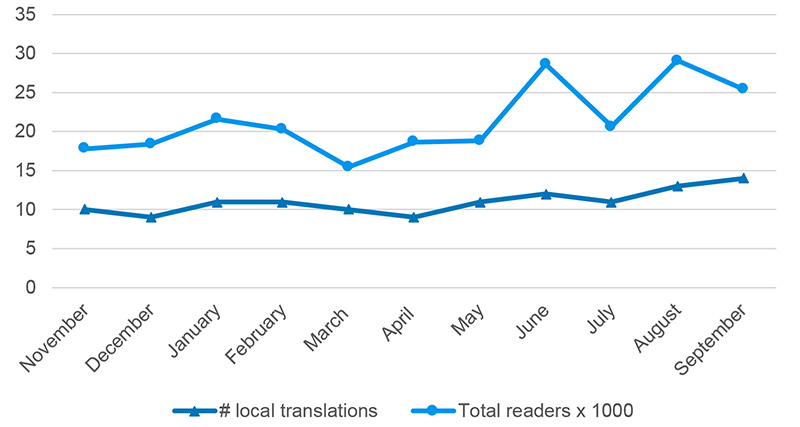Delivering our integrity message
The basic strategy behind any communications plan is to understand how users and employees receive and process information. Without this basic understanding, it is nearly impossible to create a strategy that is effective, despite the repeated emphasis by regulatory authorities that training and communications are critical to any compliance/integrity program. With this in mind, we decided to evaluate the channels of communication to the employees in the countries and see what we could do to increase readership and to spread the integrity message further into the countries.
Over the course of 2014, we developed several ideas that we would rollout on a periodic basis through various channels.
Integrity activity and comms plan 2014 – Key deliverables

On the one hand, while we felt it was important to introduce new ideas and new ways to engage our employees, we still needed to understand how they came to our stories and what we could do to keep their attention.
We decided to analyze our biggest communications activity – the cases of consequence.
Every month, we publish a real case of consequence from our case files in order to raise awareness in our employee population; not only to highlight risk areas, but also to educate and train. This initiative was started in 2007 and continued sporadically until it became a regular feature of Integrity communications in October 2011. Since then we have published 46 cases on the company intranet.
In order to determine how we can enhance readership in the countries and regions, we analyzed website traffic for these cases of consequence. However, as readership of the main Group homepage is limited in audience and language, we wanted to look deeper into who was reading our stories and how they communicated to local employees.
A short examination of one case of consequence published in January 2014 showed that international readership of the case of consequence on the Group page was limited. Additional examination of local portal translations showed that the numbers were not dramatically different, and the coordination of translations was very much ad hoc.
The analysis demonstrated that there was a hunger for the material, but underscored the importance of cascading the message in a coordinated fashion throughout the organization. It was also important to reach employees by providing the material in a number of different languages.
Consequently, we set up a coordinated timetable to encourage early translation of the cases, as well as publication around the same time. We started with Germany, Switzerland, Italy, Brazil, and China. We have since broadened the coordination effort with Estonia, Latvia, Portugal, Korea, Russia, France, Spain, and the Czech Republic.
Number of Translations and Readership

Lessons Learned and Further Steps
Overall, there is a relationship between the number of translations that are done and the total number of readers. This is logical as many employees go only to their country portals in order to access local information. When the story is available in the local language, it makes it more accessible.
After coordinating the timing for translation to take place with more countries, we saw a small increase in the number of local translations done, but since the strategy was first implemented around May/June 2014, there is still some time to see the long-term effects. The countries where we have more employees show higher numbers of readers for the local translations than for the original story, so the next steps involve leveraging the translations in a different way (e.g. using French translation to reach the historically low number of readers in some Francophone countries) and increasing the number of available translations on publication day.